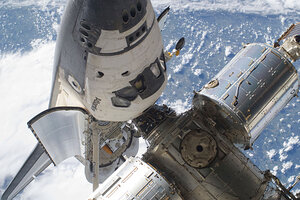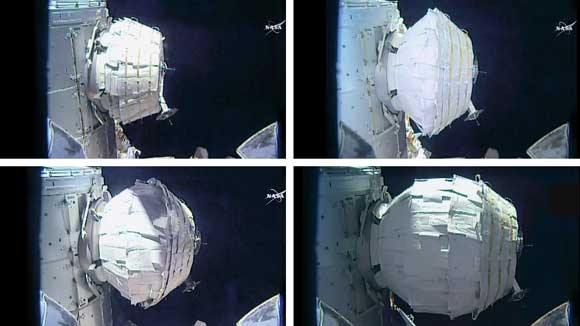
The threshold for evacuating rather than staying to locate the problem is when the time left before dropping to the minimum safe pressure level (9.5 psi) is less than ten minutes. There is a detailed summary in section 3.1 of this paper. If the station develops an unexpected rapid loss of pressure, the initial process is to go to a safe location when the alarm is sounded, then begin trying to locate the leak if possible. If the leak is one of the crew vehicles (Soyuz or Dragon), the crew of that vehicle might have to return early, if the leak couldn't be fixed.Īlso relevant: Can they isolate individual modules on the ISS? Therefore, if "catastrophic" = "evacuate the ISS", a small hole is unlikely to cause that. So unless the leak is massive, the entire ISS is unlikely to be depressurized. However, the individual modules making up the ISS have hatches separating them, so time permitting (as described in the linked document) a sort of binary search would be performed by closing hatches to split the volume into halves until the leaking module was isolated. The program is helping to lower the cost of spaceflight and potentially create a new commercial market for humans in space.There are some numbers in The International Space Station - Operating an Outpost in the New Frontier page 348: The agency does not own or operate the spacecraft.

Unlike previous human spaceflight programs, NASA is a customer buying flights from commercial providers. SpaceX's Dragon and Boeing's Starliner were created with support from NASA's commercial crew program, a partnership between NASA and private industry to carry astronauts to and from the International Space Station. Why does NASA pay SpaceX and Boeing to fly astronauts to the ISS? Future vehicles include Boeing's Starliner for crews, and Japan's HTV-X and the Sierra Nevada Dream Chaser for cargo. Current cargo vehicles are Soyuz, Dragon, and Northrop Grumman's Cygnus. Current crew vehicles are the Russian Soyuz and SpaceX Dragon. Earth science and astrophysics instruments that use the station as an orbital platformĪ fleet of international and commercial spacecraft service the ISS.Physical science experiments that benefit from the station’s weightless environment.Technology demonstrations for future human spaceflight equipment, including experience gained from current operational systems.


What kinds of experiments are conducted on the ISS? Pressurized volume equivalent to a mid-size passenger airplane, with nearly half of that available for the crew.Īstronauts staff the station in pairs of three or four-person crews assigned to overlapping six-month missions, with each unique complement of up to seven people composing a numbered Expedition (each crew serves on two Expeditions during their stay). Additional governmental and commercial components and modules have been added since, with more planned for the future. and Russian rockets over the course of 13 years. The ISS core consists of modules launched by U.S. What's it like aboard the International Space Station? Use NASA's Spot the Station tools to find out when it will fly over your location. Want to see the ISS for yourself? It's the easiest artificial object to see in the night sky. The station’s societal impact combined with its function as a one-of-a-kind research laboratory enables it to directly and indirectly benefit space science and exploration. Astronauts on the station regularly speak with school children, inspiring new generations of scientists, technologists, engineers, artists, and mathematicians. In the United States, a majority of the public believes astronauts, not just robots, should explore space.

The ISS holds a special place in popular culture. It operates thanks to the cooperation of 15 nations working under formal international agreements. and Russia to focus on a common goal, the station has largely remained unaffected by Earthly politics. Born out of the ashes of the Cold War as a way for the U.S. The ISS shows that multiple countries and private companies can work together for the peaceful exploration of space. We must also test technologies that will be needed to keep humans alive in deep space, where supply ships and quick returns to Earth are not available. NASA and its international partners conduct research aboard the ISS that helps us prepare for deep space.Īs humans prepare to explore the Moon and Mars, we must understand how astronauts will cope with spaceflight side effects like vision degradation, bone loss, and social isolation. Continuously staffed since November 2, 2000, it is the longest-running space station program of all time. The International Space Station (ISS) is a permanently crewed space lab in Earth orbit.


 0 kommentar(er)
0 kommentar(er)
